What is a Digital Object? PDF

| Title | What is a Digital Object? |
|---|---|
| Author | Yuk Hui |
| Pages | 17 |
| File Size | 666.7 KB |
| File Type | |
| Total Downloads | 360 |
| Total Views | 499 |
Summary
bs_bs_banner © 2012 The Author Metaphilosophy © 2012 Metaphilosophy LLC and Blackwell Publishing Ltd Published by Blackwell Publishing Ltd, 9600 Garsington Road, Oxford OX4 2DQ, UK, and 350 Main Street, Malden, MA 02148, USA METAPHILOSOPHY Vol. 43, No. 4, July 2012 0026-1068 WHAT IS A DIGITAL OBJECT...
Description
Accelerat ing t he world's research.
What is a Digital Object? Yuk Hui Metaphilosophy Vol. 43, No. 4
Cite this paper
Downloaded from Academia.edu
Get the citation in MLA, APA, or Chicago styles
Related papers
Download a PDF Pack of t he best relat ed papers
Philosophical Engineering: Toward a Philosophy of t he Web (Wiley / Blackwell) Alexandre Monnin
Review: Yuk Hui, On T he Exist ence of Digit al Object s Maria Dada Induct ion, Deduct ion and Transduct ion: On t he Aest het ics and Logic of Digit al Object s Yuk Hui
bs_bs_banner
© 2012 The Author Metaphilosophy © 2012 Metaphilosophy LLC and Blackwell Publishing Ltd Published by Blackwell Publishing Ltd, 9600 Garsington Road, Oxford OX4 2DQ, UK, and 350 Main Street, Malden, MA 02148, USA METAPHILOSOPHY Vol. 43, No. 4, July 2012 0026-1068
WHAT IS A DIGITAL OBJECT? YUK HUI
Abstract: We find ourselves in a media-intensive milieu comprising networks, images, sounds, and text, which we generalize as data and metadata. How can we understand this digital milieu and make sense of these data, not only focusing on their functionalities but also reflecting on our everyday life and existence? How do these material constructions demand a new philosophical understanding? Instead of following the reductionist approaches, which understand the digital milieu as abstract entities such as information and data, this article proposes to approach it from an embodied perspective: objects. The article contrasts digital objects with natural objects (e.g., apples on the table) and technical objects (e.g., hammers) in phenomenological investigations, and proposes to approach digital objects from the concept of “relations,” on the one hand the material relations that are concretized in the development of mark-up languages, such as SGML, HTML, and XML, and on the other hand, Web ontologies, the temporal relations that are produced and conditioned by the artificial memories of data. Keywords: digital objects, phenomenology, metadata, Stiegler, Simondon.
In this article I attempt to outline what I call digital objects, showing that a philosophical investigation is necessary by revisiting the history of philosophy and proposing that it is possible to develop a philosophy of digital objects. I consider first the question of the digital, then the question of objects, and finally the question of the digital again. What I call digital objects are simply objects on the Web, such as YouTube videos, Facebook profiles, Flickr images, and so forth, that are composed of data and formalized by schemes or ontologies that one can generalize as metadata. These objects pervade our everyday life online, and it is in fact very difficult for us to separate what is online and offline anymore, as indicated decades ago by the action of “jacking into cyberspace.”1
1 A phrase used frequently by William Gibson in Neuromancer (1984), which nicely describes the separation between two worlds that one tended to imagine in the 1980s and 1990s.
© 2012 The Author Metaphilosophy © 2012 Metaphilosophy LLC and Blackwell Publishing Ltd
WHAT IS A DIGITAL OBJECT?
381
It is not only that we become addicted to different trendy gadgets, but also that they constitute a ubiquitous milieu from which we cannot escape. Digital objects are not simply bits and bytes, as proposed in the digital physics or digital ontology in the works of Edward Fredkin and Stephen Wolfram. Digital ontology consists of two main concepts: first, that bits are the atomic representation of the state of information; and second, that the temporal state of evolution is a digital information process (Floridi 2009). The second point embodies a long historical debate between humanism and cybernetics. Nevertheless, both concepts ignore the fact that we are interacting with digital objects: they are actually objects that we drag, we delete, we modify, and so on. The Web is acting both as an interface between users and digital objects and as a world in which these digital objects conceal and reveal—in both physical and metaphysical terms. But I am not suggesting here that the previous propositions about the digital are simply wrong; to use an analogy, we now know that the world consist of atoms, but to think only in terms of atoms won’t help us to explain the world. That is to say, such a digital philosophy is insufficient to help us reach an understanding of everyday life amid technological acceleration, not to mention a deeper reflection on existence. In this article, I propose first to move the investigation from the digital to objects, and continue from there. Then I want to contrast digital objects with past investigations into natural objects and technical objects, and finally I will extend the analysis to digital objects. First of all, I want to make a not-so-modest claim here that Western philosophy from Aristotle to Edmund Husserl concerns only natural objects, or more precisely how the objects appear or are shown to us. So first let us look at the question of natural objects. When speaking of natural objects, we don’t mean objects given by nature, such as vegetables or animals. A natural object here refers to the category in which every object, whether natural or fabricated, is analysed in the same natural manner. This method proposes that an object can be understood by grasping its essence, which determines its particular appearance. This process of knowing, at first glance, already supposes the object itself and the object for knowledge. This leads to the development of a scientific knowledge that works towards an absolute certainty, which guarantees the correspondence between the thing itself and consciousness. In his Categories Aristotle proposes to understand being in terms of substance and accident. He says: “That which is called a substance most strictly primarily and most of all—is that which is neither said of a subject nor in a subject, e.g. the individual man or the individual horse” (Aristotle 1984, 2a13–2a18). Substance itself is the subject. Accidents are the predicates of the subject. Clearly, in his Categories Aristotle designates the subject-predicate pairing both as a grammatical structure and as a system of classification. The relation between language as classification and things as physical beings is already established. © 2012 The Author Metaphilosophy © 2012 Metaphilosophy LLC and Blackwell Publishing Ltd
382
YUK HUI
Aristotle gives a more detailed, while somewhat divergent, account of substance in Metaphysics (book Z), where he says that the question “‘what is being?’ really amounts to ‘what is substance?’” (Aristotle 1956, 168). He then proposes to understand the substance of the substratum. The substratum can be described in terms of sensible form and matter. Sensible form is concerned with “what kind of thing” something is, and matter concerns “what it is made of.” Aristotle proposed to decide which of the three elements, form, matter, or the composite of form and matter, can be called substance. He rejected matter and the composite of matter with form, the first because it can be a predicate of the subject, the second because it is “posterior in nature and familiar to sense” (Aristotle 1956, 172). He finally decided that form is the sole understanding of substratum. Sensible forms raise the question of essence. There are two points we have to note here: first, the question of substantial form became a long-lasting philosophical question concerning the essence of things and their representation; and second, the distinction between subject and object did not come to be made until Descartes, and so the thing under contemplation is a subject but not an object. The concept of subject moving away from thing to the ego that contemplates it is characteristic of a separate yet constant mediation between subject (consciousness) and substance (essence) (Rotenstreich 1974, 2). The subject-substance question can be understood as the core of the philosophical conceptuality of natural objects (Rotenstreich 1974, 1). We can follow a long historical trajectory from Hume through Kant, German idealism (including Fichte, Hegel, and so on), and later Husserl, which one can call the phenomenological tradition. These philosophers proposed different models for understanding the relation between subject and substance, and it is obvious that one cannot generalize their thought, since each of them requires considerable investigation. However, if there is something one can say these philosophers have in common it is that they all want to find out how the subject allows substance to manifest itself as such, and how the subject takes a more and more active role (for Hume, the subject is almost passive). As we cannot undertake a thorough examination of the thought of each philosopher one by one here, I would like to exemplify this tradition through Husserlian phenomenology, since Husserl is the one who made “Back to the things themselves!” the slogan of phenomenology. Husserlian phenomenology is known as descriptive phenomenology. The very word “descriptive” clearly distinguishes Husserl from Hegel. For Husserl, phenomenology is a descriptive process, which goes back and forth to depict the object through the knowing consciousness, while for Hegel phenomenology is a speculative process in which multiple stages of self-consciousness are attained through dialectical movements and sublations. They are not totally separated, however, since Husserl’s phenomenology is another investigation into consciousness and is an attempt to provide the absolute foundation © 2012 The Author Metaphilosophy © 2012 Metaphilosophy LLC and Blackwell Publishing Ltd
WHAT IS A DIGITAL OBJECT?
383
of all science. From this perspective Husserl and Hegel share the same ambition.2 Husserl’s phenomenology rejected Kant’s thing-in-itself (das Ding an sich), which states that human beings can know only the phenomenon of things; knowledge of thing-in-itself demands an intellectual intuition which is absent in human beings (Kant 1996). Husserl denounced the thing-in-itself as a mystery, and he proposed that we can actually know the object through the movements of intentionality. Since Husserl starts as an arithmetician, then becomes a philosopher of logic and consciousness, and finally ends as a philosopher of culture, it is almost impossible to summarize a theory of the object in a way that captures his entire understanding. But in a nutshell, Husserl regards everything as a possible intentional object; for example, a number or an apple is an object. Husserl’s project is directed against what he calls naïve realism and relativism. An object for Husserl is not what is given; rather, this given is constituted by a genesis of the senses. In order to relinquish naïve realism, the phenomenologist starts with epoché, meaning bracketing any presupposition and bias, which already constitutes the object as such. The bracketing process, to Husserl, is also a process of returning to an absolute Ego, which is free from any presupposition. In this sense the subject takes a much more active role. An intentional act then comes into being, directed from the subject to the object, and the reflection that this act effects constitutes a horizon on which the ideality of the object appears. This ideality is only possible through a process of ideation,3 which reconstitutes the horizon. The trajectory of the modern metaphysics of objects opens up several general directions for the investigation of objects. First, there is a wavering scepticism regarding the concept of substance. The transcendence of substance finds its location in God; in other words, substance and God are on the same plane, since they are beyond human experience. The risk involved in an absolute knowledge of the object easily leads to the destruction of the whole plane by bringing it down to the plane of immanence. This philosophical trajectory also accompanies the scientific spirit in working towards the discovery and reassurance of the power of scientific methods, which create an exclusive system of knowledge. Second, consciousness is the ultimate mystery, and no authority can describe for itself the ultimate truth for ever. These multiple models attempt to comprehend the mind, and they assign different mechanisms to it. This is important, since the mind is the same as the object of inquiry (even if it is much more complicated), and we can also pose the question of the thing-in-itself of 2 Husserl’s connection with Hegel, in my view, can be made through Heidegger, especially through his understanding of Hegel’s concept of “experience” and Husserl’s notion of “categorial intuition.” 3 Ideation here takes a Platonic sense, meaning how the ideality can be deduced through a mediative process such as recollection; for Husserl, it consists of different cognitive functions such as explication, negation, and so on, that seek the essence of the object.
© 2012 The Author Metaphilosophy © 2012 Metaphilosophy LLC and Blackwell Publishing Ltd
384
YUK HUI
the mind just as we may do for a fillet of steak or a cauliflower. In Hume, Kant, Hegel, and Husserl, consciousness is imbued with specific functions, which are also systemized as part of an organon of knowing (although none of them would admit the word “organon”). Third, the role of knowing falls totally on the mind. The other side of the coin is that objects are always objects of experience. The predicates of the objects are qualities that can be experienced, so all of the above-mentioned philosophers are eager to find the structure of consciousness that would allow it to know the object, but there is among them less investigation into the object’s own existence, and how its existence conditions the process of knowing and being itself. Technical Objects Within the dialectics of substance and subject, there is no place for technical objects. Ignorance of these objects in philosophy has meant that it has failed to absorb the rapid development of technology and social change after the industrial revolution. The idea of the philosopher as a figure who stands outside as mere critic and defends the purity of thought and inquiry into human nature has been washed away in the flux of technological progress. It is possible to argue that most of the philosophers of phenomenology except Husserl came before the industrial revolution, so they dismissed technical objects. Yet technical objects are not necessarily complicated machines; a hammer or a knife is also a technical object. Indeed, Husserl the philosopher witnessed the rapid proliferation of machines after the industrial revolution but didn’t bring them into his phenomenological theory.4 A new philosophical attitude as well as a new philosophical system must be constituted in order to comprehend the changes that this process entailed. If ontology starts with the question of being, then there is a problem that the understanding of being is not on the right path if it does not take into account the nature of technology. And this is very clear if we follow Heidegger’s proposition that the beginning of cybernetics is the end of metaphysics (Heidegger 2001). I will therefore propose two figures who may bring the concept of technical objects to light and prepare the ground for our investigation of digital objects: the French philosopher Gilbert Simondon (1924–1989) and the German philosopher Martin Heidegger (1889–1976). They may appear at first glance to be incompatible, because Simondon is an admirer of modern technology, while Heidegger is known as a philosopher who was opposed to it. Simondon’s 1958 doctoral thesis, later published as On the Mode of Existence of Technical Objects (1980), proposed what he calls a “mech4 The absence of technical objects in Husserl is further elaborated by Bernard Stiegler in Technics and Time, vol. 1 (1998) and vol. 2 (2009). Stiegler shows that Husserl was able to talk about primary and secondary retention but not tertiary retention, which is one of the most important elements of technical objects.
© 2012 The Author Metaphilosophy © 2012 Metaphilosophy LLC and Blackwell Publishing Ltd
WHAT IS A DIGITAL OBJECT?
385
anology.” Mechanology investigates the existence of technical objects through their movement towards perfection. Simondon demonstrates their lineage from the origin of technology to the point where it provides an increasingly concrete object through the example of the evolution from diodes to Lee de Forest triodes. The diode is a device that controls the flow of current in a single direction. In its simplest form, within a vacuum tube, the cathode is heated and hence activated to release electrons. The anode is positively charged so that it attracts electrons from the cathode. When the voltage polarity is reversed, the anode is not heated, and thus cannot emit electrons. Hence there is no current. A triode places a grid between the anode and the cathode; a DC current can give a bias to the grid: if it is negative, it will repel some of the electrons back to the cathode and hence serve as an amplifier (see figure 1). Simondon proposes that the absolute beginning of the triode is not the diode but is to be found “in the condition of irreversibility of the electrodes and the phenomenon of the transport of electric charges across the vacuum” (Simondon 1980, 36). The diode or the triode is what Simondon calls a technical element, and the ensemble of these elements constitutes a technical individual. But one shouldn’t simply understand it as a collection of components; a technical individual is a technical object that supports the functioning of its inner structure at the same time as it is able to adapt an external milieu to its functioning. This view differs from the views of some other theorists on technical compositions, such as Herbert A. Simon. Simon approaches
FIGURE 1. An indirect heated vacuum tube diode and triode. © 2012 The Author Metaphilosophy © 2012 Metaphilosophy LLC and Blackwell Publishing Ltd
386
YUK HUI
technologies through systems and subsystems, and the interface that allows subsystems to communicate with each other (Haugeland 1993). Simondon goes deeper down to the modes of existence of technical objects and derives a theory of system from different “orders of granularities” ranging from technical elements, to individuals, to systems. What is the most intriguing and most interesting thing in Simondon’s theory of systems is the idea of an “associated milieu” that provides a stabilizing function to restore the equilibrium of the system itself. For example, Simondon often spoke of the Guimbal turbine (named after the engineer who invented it), which, to solve the problem of loss of energy and overheating, uses oil to lubricate the engine and at the same time isolate it from water; it can then also integrate a river as the cooling agent of a turbine (Simondon 2005). The river here is the associated milieu for the technical system; it is part of the system but not a component of the machine. Simondon’s approach to technical objects differs from that of previous philosophers and phenomenologists in that he didn’t reduce the technical object to the intentional defect of consciousness and hence make it an object for knowledge. He proposed to study the genesis of the technical object itself, less in a biological sense than in a mechanical one. A technical object regains its materiality and attains a different degree of concreteness or perfection in contrast to what cybernetics term “control.” In contrast to Simondon, I believe, Heidegger provided a new way of understanding relations (although Heidegger himself would immediately reject the above proposal). Heidegger’s contribution to the understanding of technical objects can be found in Being and Time, dating from 1927, where he talks about the “ready-to-hand.” Heidegger (1967) proposes two categories: “ready-to-handness” (Zuhandenheit) and “present-athandness” (Vorhande...
Similar Free PDFs
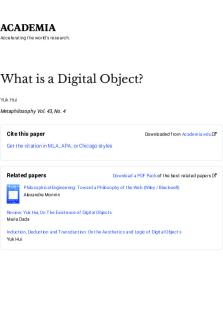
What is a Digital Object?
- 17 Pages
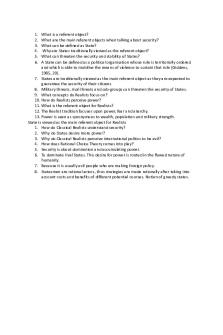
What is a referent object
- 1 Pages
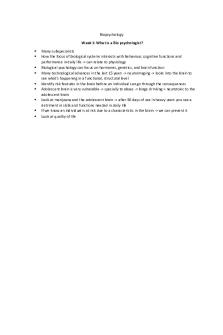
What is a Biopsychologist
- 1 Pages

What is a social fact
- 2 Pages

What is ABA - Grade: A
- 5 Pages

What is race - Grade: A
- 1 Pages
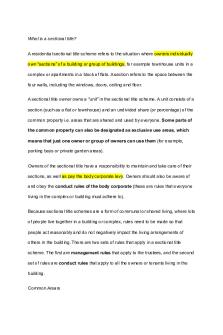
What is a sectional title
- 4 Pages

What is a summary judgement
- 5 Pages

What is a product - lecture
- 4 Pages

What is a ketogenic diet
- 2 Pages
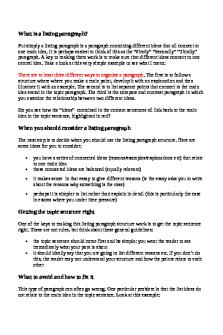
What is a listing paragraph
- 14 Pages

What is a Breadth Indicator
- 4 Pages

What makes an object art
- 2 Pages
Popular Institutions
- Tinajero National High School - Annex
- Politeknik Caltex Riau
- Yokohama City University
- SGT University
- University of Al-Qadisiyah
- Divine Word College of Vigan
- Techniek College Rotterdam
- Universidade de Santiago
- Universiti Teknologi MARA Cawangan Johor Kampus Pasir Gudang
- Poltekkes Kemenkes Yogyakarta
- Baguio City National High School
- Colegio san marcos
- preparatoria uno
- Centro de Bachillerato Tecnológico Industrial y de Servicios No. 107
- Dalian Maritime University
- Quang Trung Secondary School
- Colegio Tecnológico en Informática
- Corporación Regional de Educación Superior
- Grupo CEDVA
- Dar Al Uloom University
- Centro de Estudios Preuniversitarios de la Universidad Nacional de Ingeniería
- 上智大学
- Aakash International School, Nuna Majara
- San Felipe Neri Catholic School
- Kang Chiao International School - New Taipei City
- Misamis Occidental National High School
- Institución Educativa Escuela Normal Juan Ladrilleros
- Kolehiyo ng Pantukan
- Batanes State College
- Instituto Continental
- Sekolah Menengah Kejuruan Kesehatan Kaltara (Tarakan)
- Colegio de La Inmaculada Concepcion - Cebu


